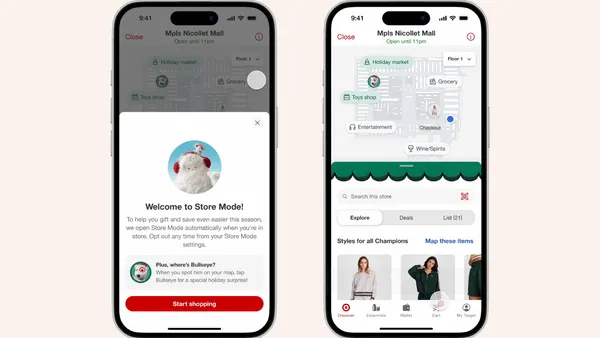Dive Brief:
-
The performance of retail and brand desktop and mobile websites continues to worsen as those companies add third-party features and functions to enrich the shopper experience, but fail to test the effect those additions have on overall performance, according to a study conducted by Retail Systems Research and sponsored by e-commerce cloud platform company Yottaa.
-
As a group, the 80 retail and brand websites evaluated by RSR in three categories — desktop site performance, mobile site performance and shopping experience — scored lower than when the same study was conducted at this time last year.
-
The company that scored the highest ranking in the study was Adidas AG, closely followed by The Men's Wearhouse, Ulta Beauty, 1-800-Contacts and Edible Arrangements. The lowest score, meanwhile, belonged to Abercrombie & Fitch, according to RSR’s evaluations.
Dive Insight:
Last year at this time, RSR found the retail and brand websites it evaluated to be suffering from "disturbingly slow"performance. It doesn’t sound like things could have gotten much worse than that, but they apparently did. In the case of mobile site performance, RSR described average load times as "embarrassingly slow."
The main culprit in the worsening performance is a familiar one. E-commerce websites, in an effort to create as full and as rich an experience as possible for shoppers, continue to add third-party features and functions that drag down performance.
In many cases, the additions lure shoppers to pages or keep them actively browsing and buying on the site for longer than they might otherwise do so. And it’s not just the number of features that can be an issue, but how many requests each of these features generate during an average shopping session that could have a dramatic effect on page loading times as the session proceeds.
For example, the average number of third-party data requests generated on e-commerce sites RSR evaluated was 139, an increase of 50% over last year. But some sites experience a huge number of such requests. Talbots, for example, registered as many as 300 such requests when tested, despite having a roughly average number of third-party features — many e-commerce sites have between 30 and 40 third-party functions while Talbots had 35 when tested. Such a high number of requests poses "a serious hindrance" on overall site performance, according to the study.
This may not be the only issue with third-party components. Some retailers may not be making the most of third-party additions such as social engagement and chat features. These features drag on site performance, but may be worth it for higher levels of customer engagement — although not if shoppers can’t find them buried in site menus and other hard-to-see locations, which RSR said was the case with some retailers’ sites.
The news isn’t all bad. "Mobile sites only become more beautiful, intuitive and shoppable as time goes on," RSR stated in the report, noting that increased focus on shopper experience is ultimately a positive development, and that retailer and brand e-commerce sites continue to get better at competing with Amazon. Still, they need to make sure shoppers stick around to realize all these positives, instead of leaving because the site is slow.











